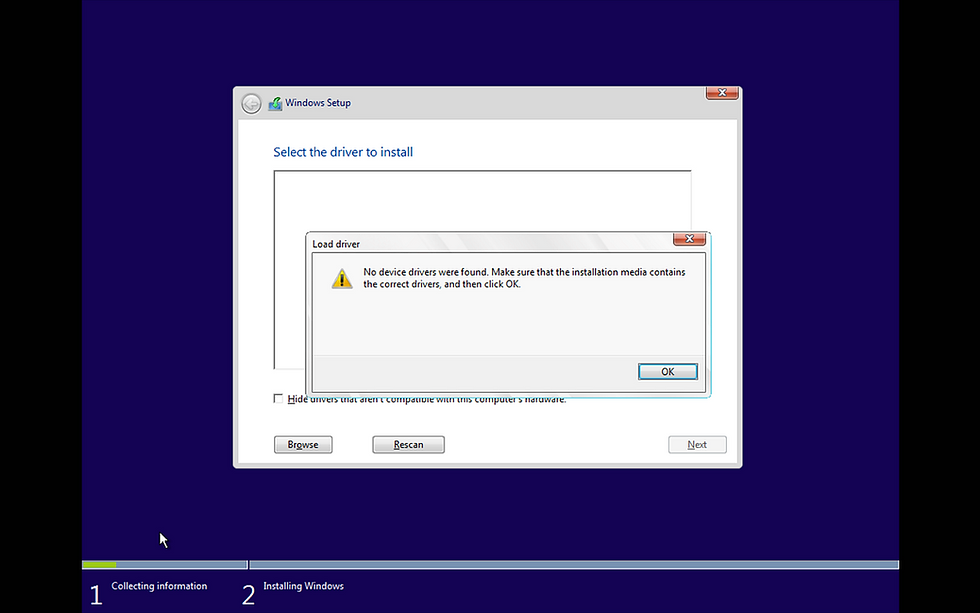The Vital Role of IT Troubleshooting Support
- Stark

- Sep 11
- 3 min read
In today’s fast-paced business world, technology is the backbone of almost every operation. When IT systems falter, it can bring work to a halt, causing frustration and lost productivity. That’s why IT troubleshooting support is so important. It helps businesses quickly identify and fix problems, keeping everything running smoothly. I want to share why this support is vital, what it involves, and how it can make a real difference for your business.
Why IT Troubleshooting Support Matters
When technology breaks down, the impact can be immediate and costly. Imagine your email server goes down or your network slows to a crawl. Without quick help, your team can’t communicate or access important files. This is where IT troubleshooting support steps in.
Here’s why it’s essential:
Minimises downtime: Fast problem-solving means less time lost.
Protects data: Troubleshooting can prevent data loss or breaches.
Saves money: Fixing issues early avoids expensive repairs or replacements.
Improves efficiency: Smooth systems help your team work better.
Supports growth: Reliable IT allows your business to scale confidently.
Having a dedicated team or service ready to tackle IT issues means you can focus on what matters most - growing your business.

Understanding IT Troubleshooting Support
IT troubleshooting support is more than just fixing broken computers. It’s a systematic approach to identifying, diagnosing, and resolving technical problems. This support covers hardware, software, networks, and security systems.
Typical steps involved include:
Problem identification: Recognising symptoms and gathering information.
Diagnosis: Pinpointing the root cause through testing and analysis.
Solution implementation: Applying fixes, updates, or replacements.
Verification: Ensuring the problem is fully resolved.
Documentation: Recording the issue and solution for future reference.
This process requires technical knowledge, patience, and clear communication. The goal is to restore normal operations quickly and prevent the issue from recurring.

What is troubleshooting in IT support?
Troubleshooting in IT support is the methodical process of solving problems that affect technology systems. It’s like being a detective for your IT environment. When something goes wrong, troubleshooting helps find out why and how to fix it.
For example, if your network is slow, troubleshooting might involve:
Checking hardware connections.
Testing network speeds.
Reviewing recent software changes.
Scanning for malware or viruses.
By following these steps, IT professionals can isolate the problem and apply the right solution. This approach reduces guesswork and speeds up recovery.
Effective troubleshooting also involves proactive measures like regular system checks and updates. This helps catch issues before they cause major disruptions.
How IT Troubleshooting Support Benefits Your Business
Investing in reliable IT troubleshooting support brings many advantages. Here are some practical benefits you can expect:
Faster problem resolution: Expert support means issues get fixed quickly.
Reduced stress: Knowing help is available eases worries about tech failures.
Better system performance: Regular troubleshooting keeps systems optimized.
Enhanced security: Identifying vulnerabilities helps protect your data.
Customised solutions: Support tailored to your business needs improves outcomes.
For instance, if your business relies on cloud services, troubleshooting support can ensure smooth access and prevent downtime. If hardware fails, quick replacement or repair keeps your operations uninterrupted.
By partnering with a trusted IT support provider, you gain peace of mind and more time to focus on your core work.

Choosing the Right IT Troubleshooting Support Partner
Not all IT support services are the same. To get the best results, look for a partner who understands your business and offers comprehensive support.
Consider these factors:
Experience: Proven track record in handling diverse IT issues.
Availability: Support that matches your business hours or offers 24/7 help.
Expertise: Skilled technicians familiar with your technology stack.
Communication: Clear, friendly, and timely updates.
Customisation: Solutions tailored to your specific challenges.
For example, troubleshooting it support from a provider like ITWizard can offer hardware failure assistance, upgrades, and ongoing maintenance. This ensures your IT environment stays healthy and responsive.
Taking the Next Step with IT Troubleshooting Support
If you want to keep your business running smoothly, investing in quality IT troubleshooting support is a smart move. It’s not just about fixing problems - it’s about building a reliable technology foundation.
Here are some tips to get started:
Assess your current IT setup: Identify weak points and common issues.
Choose a support plan: Find a service that fits your needs and budget.
Train your team: Encourage basic troubleshooting skills to handle minor issues.
Schedule regular maintenance: Prevent problems before they arise.
Stay informed: Keep up with technology trends and updates.
Remember, technology should empower your business, not hold it back. With the right support, you can focus on growth and success without worrying about IT headaches.
By understanding the vital role of IT troubleshooting support, you’re better equipped to protect your business and keep your technology working for you. Reliable support is an investment that pays off in productivity, security, and peace of mind.



Comments